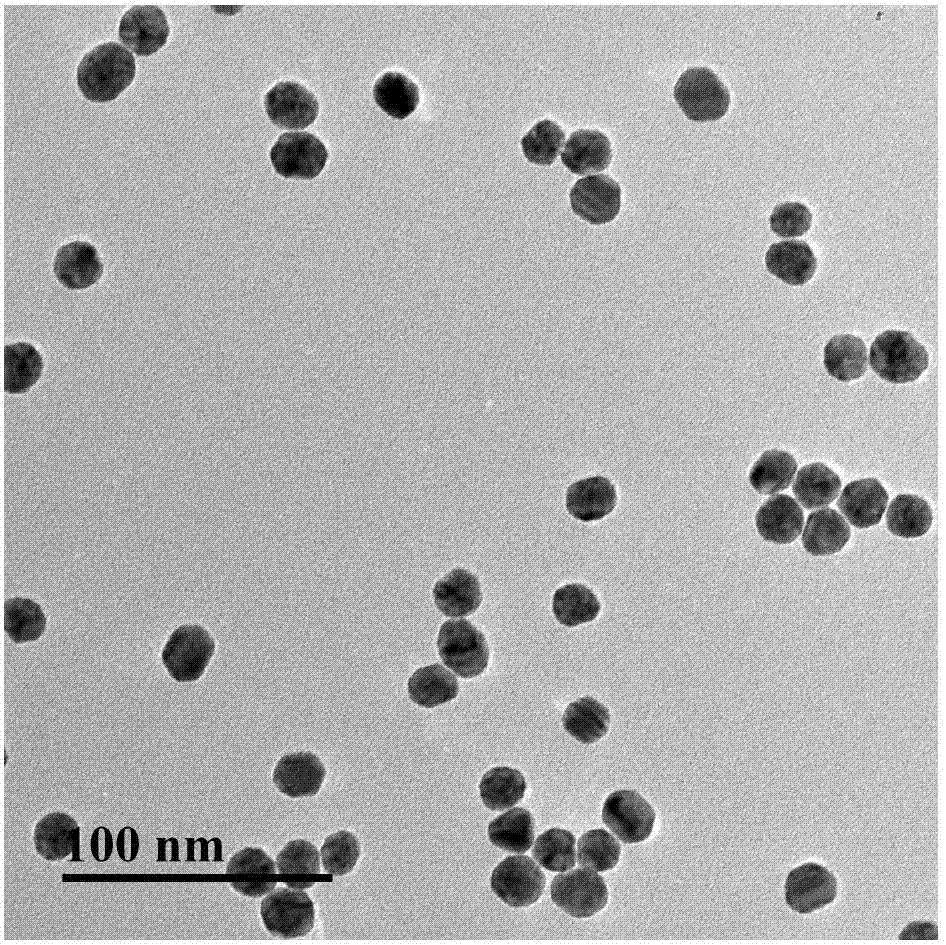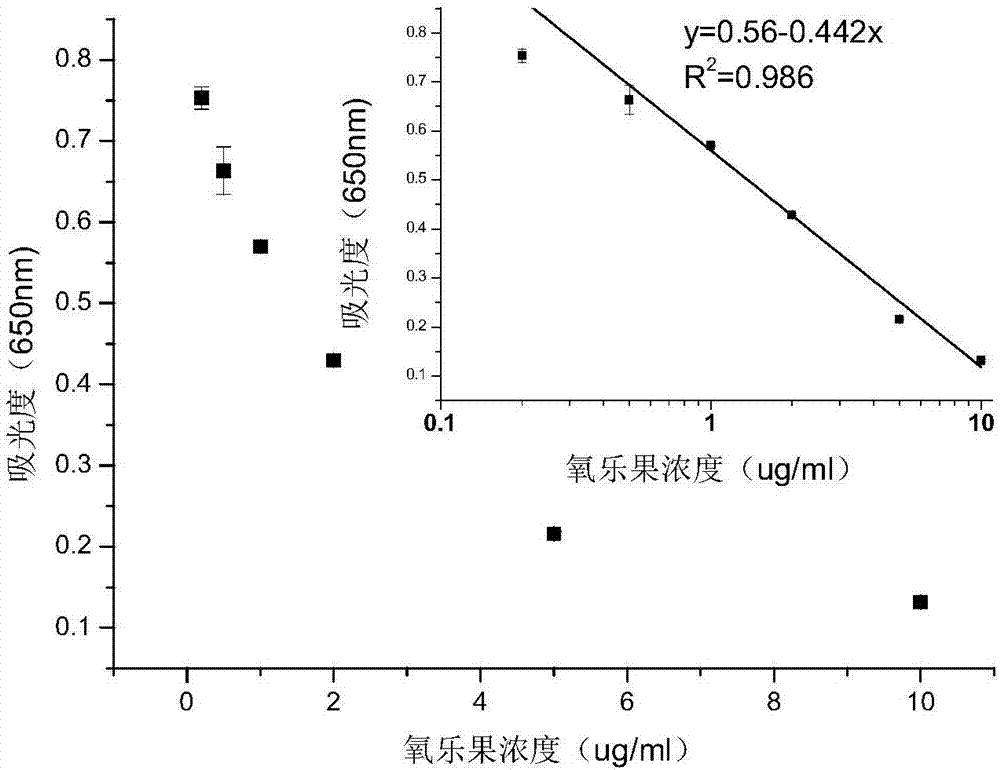Detection method and kit for organophosphorus pesticides
A technology of organophosphorus pesticides and detection kits, applied in the field of analytical chemistry, can solve the problems of high-cost use conditions, protease variability and hydrolysis, etc., and achieve the effect of low cost and high stability
- Summary
- Abstract
- Description
- Claims
- Application Information
AI Technical Summary
Problems solved by technology
Method used
Image
Examples
Embodiment 1
[0056] (1) Preparation of gold-core platinum-shell nanoparticles: use sodium citrate reduction method to synthesize a gold nanoparticle solution with an average particle size of 15nm, then get 15ml of synthetic gold nanosolution (3nM), 0.112ml, 10mM hexachloroplatinic acid Potassium (K 2 PtCl 6 ) 9.328ml in ultrapure water and placed in a clean Erlenmeyer flask, stirred on a magnetic stirrer and heated to 80°C, then slowly added 0.56ml of 10mM reducing agent-ascorbic acid to the mixed solution, the color of the solution was determined by wine The red color gradually turns brown, keep the mixed solution at 80°C and continue to stir for 30 minutes to ensure the K in the solution 2 PtCl 6 It is completely reduced, that is, gold-core platinum-shell nanoparticles with a particle size of about 20nm are obtained, see figure 1 It is the TEM image of the prepared gold-core-platinum-shell nanoparticles.
[0057] (2) After diluting the gold core platinum shell nano solution obtained ...
Embodiment 2
[0062] (1) Preparation of gold-core platinum-shell nanoparticles: use sodium citrate reduction method to synthesize a gold nanoparticle solution with an average particle size of 20nm, then take 15ml of the synthesized gold nanosolution (3nM), 0.112ml, 10mM hexachloroplatinic acid Potassium (K 2 PtCl 6 ) 9.328ml in ultrapure water and placed in a clean Erlenmeyer flask, stirred on a magnetic stirrer and heated to 80°C, then slowly added 0.56ml of 10mM reducing agent-ascorbic acid to the mixed solution, the color of the solution was determined by wine The red color gradually turns brown, keep the mixed solution at 80°C and continue to stir for 30 minutes to ensure the K in the solution 2 PtCl 6 After being completely reduced, gold-core platinum-shell nanoparticles with a particle size of about 24nm are obtained.
[0063] (2) After diluting the gold core platinum shell nano solution obtained in step (1) 20 times, mix it with 0.002wt% polyacrylic acid solution and add it in the...
Embodiment 3
[0067] (1) Preparation of gold-core platinum-shell nanoparticles: use sodium citrate reduction method to synthesize a gold nanoparticle solution with an average particle size of 22nm, then take 15ml of the synthesized gold nanoparticle solution (3nM), 0.112ml, 10mM hexachloroplatinic acid Potassium (K 2 PtCl 6 ) 9.328ml in ultrapure water and placed in a clean Erlenmeyer flask, stirred on a magnetic stirrer and heated to 80°C, then slowly added 0.56ml of 10mM reducing agent-ascorbic acid to the mixed solution, the color of the solution was determined by wine The red color gradually turns brown, keep the mixed solution at 80°C and continue to stir for 30 minutes to ensure the K in the solution 2 PtCl 6 After being completely reduced, gold-core-platinum-shell nanoparticles with a particle size of about 26nm are obtained.
[0068] (2) After diluting the gold core platinum shell nano solution obtained in step (1) 20 times, mix with 0.005wt% polyacrylic acid solution and add in ...
PUM
| Property | Measurement | Unit |
|---|---|---|
| particle diameter | aaaaa | aaaaa |
| size | aaaaa | aaaaa |
| thickness | aaaaa | aaaaa |
Abstract
Description
Claims
Application Information
 Login to View More
Login to View More - R&D
- Intellectual Property
- Life Sciences
- Materials
- Tech Scout
- Unparalleled Data Quality
- Higher Quality Content
- 60% Fewer Hallucinations
Browse by: Latest US Patents, China's latest patents, Technical Efficacy Thesaurus, Application Domain, Technology Topic, Popular Technical Reports.
© 2025 PatSnap. All rights reserved.Legal|Privacy policy|Modern Slavery Act Transparency Statement|Sitemap|About US| Contact US: help@patsnap.com



